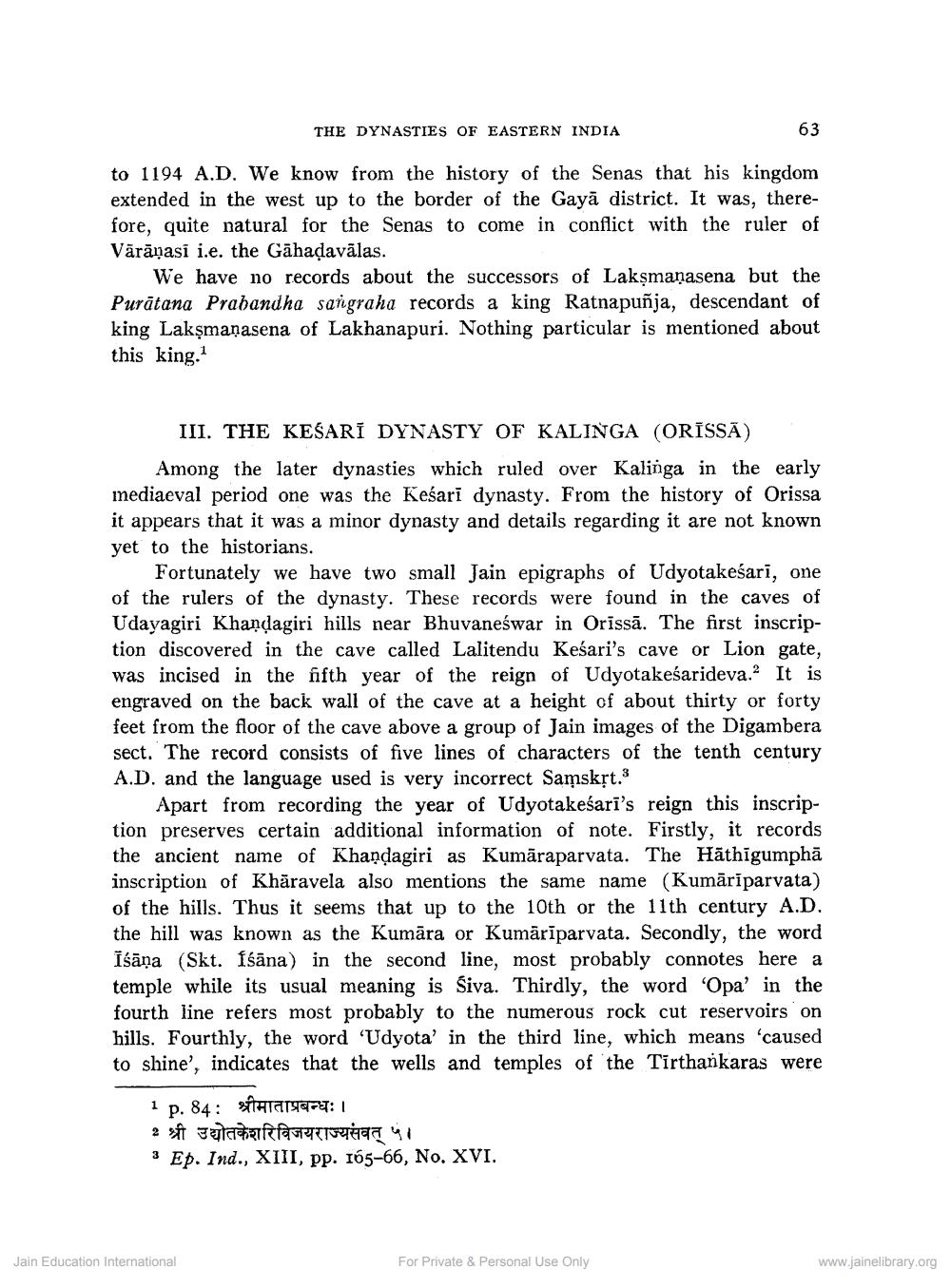________________
THE DYNASTIES OF EASTERN INDIA
to 1194 A.D. We know from the history of the Senas that his kingdom extended in the west up to the border of the Gaya district. It was, therefore, quite natural for the Senas to come in conflict with the ruler of Vārāṇasi i.e. the Gahaḍavālas.
We have no records about the successors of Laksmanasena but the Puratana Prabandha sangraha records a king Ratnapuñja, descendant of king Laksmanasena of Lakhanapuri. Nothing particular is mentioned about this king."
63
III. THE KESARI DYNASTY OF KALINGA (ORISSA)
Among the later dynasties which ruled over Kalinga in the early mediaeval period one was the Kesari dynasty. From the history of Orissa it appears that it was a minor dynasty and details regarding it are not known yet to the historians.
Fortunately we have two small Jain epigraphs of Udyotakeśari, one of the rulers of the dynasty. These records were found in the caves of Udayagiri Khandagiri hills near Bhuvaneswar in Orissa. The first inscription discovered in the cave called Lalitendu Keśari's cave or Lion gate, was incised in the fifth year of the reign of Udyotakeśarideva." It is engraved on the back wall of the cave at a height of about thirty or forty feet from the floor of the cave above a group of Jain images of the Digambera sect. The record consists of five lines of characters of the tenth century A.D. and the language used is very incorrect Samskṛt.3
Apart from recording the year of Udyotakeśari's reign this inscription preserves certain additional information of note. Firstly, it records. the ancient name of Khandagiri as Kumāraparvata. The Hathīgumphä inscription of Kharavela also mentions the same name (Kumāriparvata) of the hills. Thus it seems that up to the 10th or the 11th century A.D. the hill was known as the Kumāra or Kumārīparvata. Secondly, the word Īsāna (Skt. Isana) in the second line, most probably connotes here a temple while its usual meaning is Siva. Thirdly, the word 'Opa' in the fourth line refers most probably to the numerous rock cut reservoirs on hills. Fourthly, the word 'Udyota' in the third line, which means 'caused to shine', indicates that the wells and temples of the Tirthankaras were
p. 84 श्रीमाताप्रबन्धः ।
2 श्री उद्योतकेशरिविजयराज्यसंवत् ५ ।
3 Ep. Ind., XIII, pp. 165-66, No. XVI.
Jain Education International
For Private & Personal Use Only
www.jainelibrary.org




